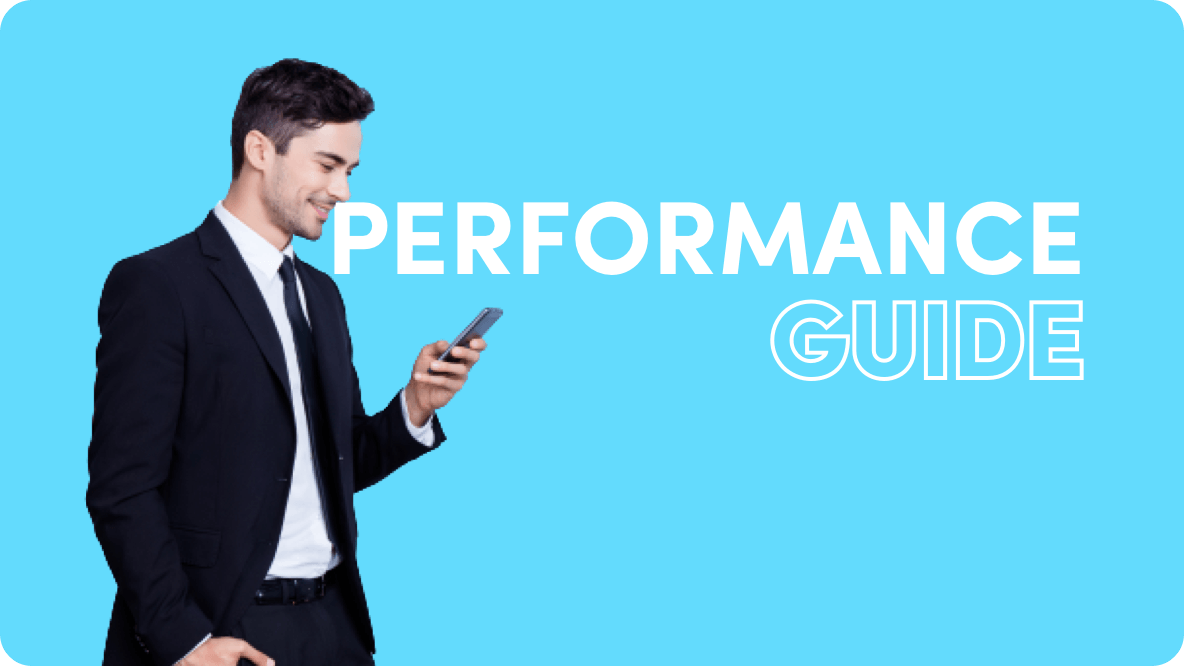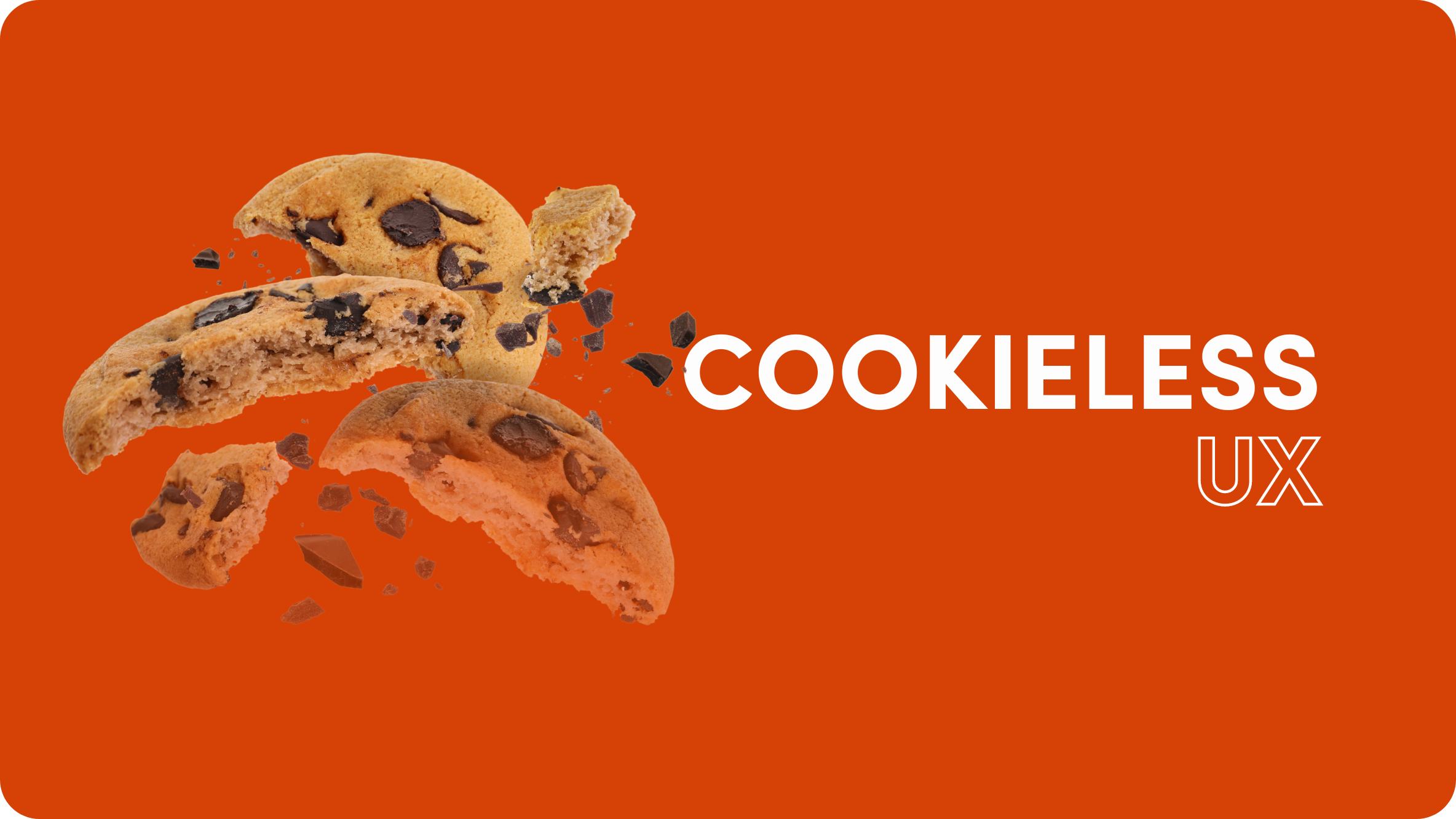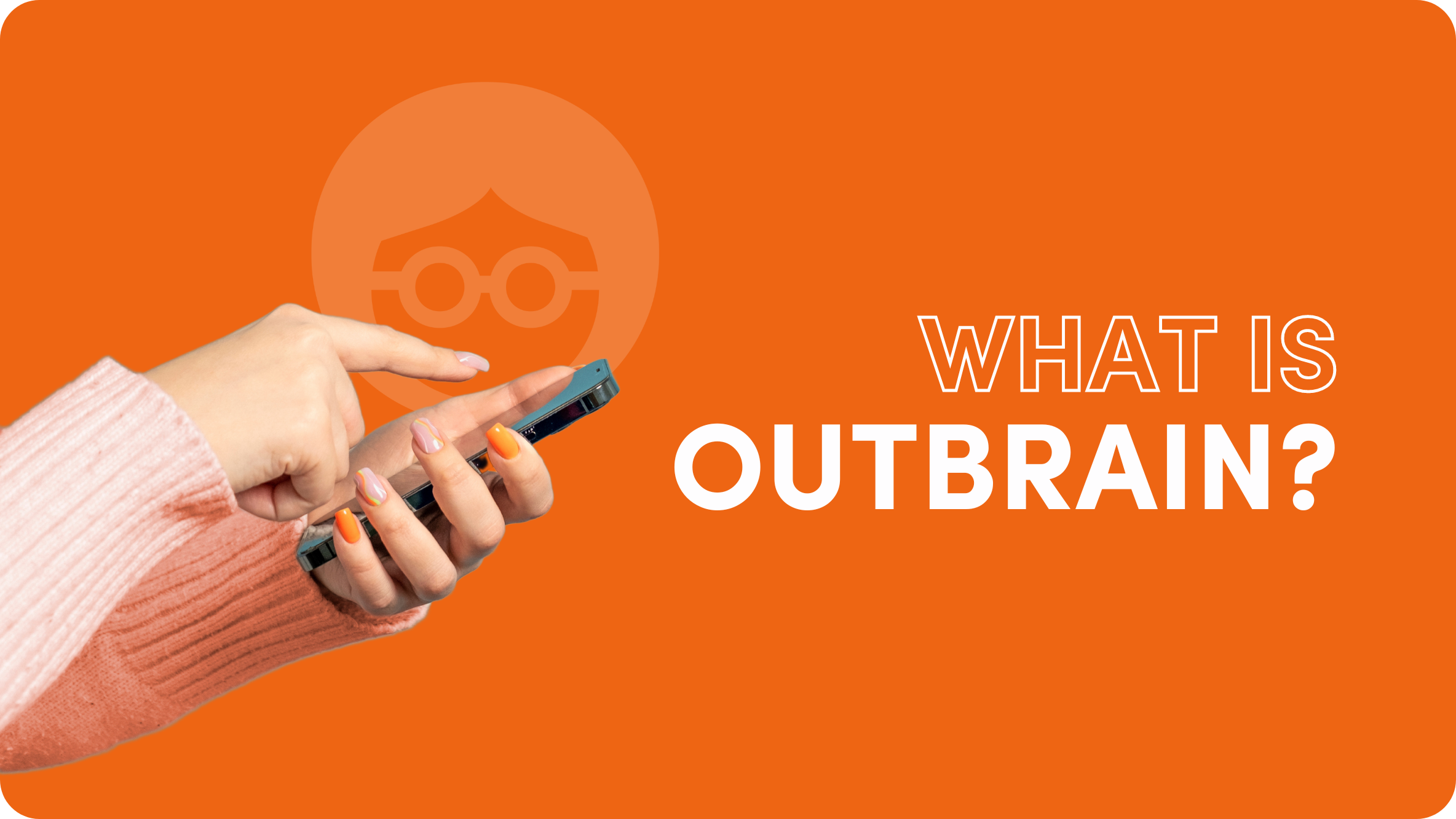How to Get Started with Performance Marketing

The internet changed forever the way consumers browse and buy products. Needless to say, it also completely altered the way companies advertise and sell. With the rise of omnichannel marketing, the potential to reach and engage more customers, more often, has also grown.
Today, marketers have the incredible capability to gather campaign data 24/7 and measure the results as they happen. While in the past, attribution was nearly impossible, data transparency now enables marketers to optimize their campaigns so they perform better. And that’s why it’s called “performance marketing”.
What Is Performance Marketing?
Performance marketing is the term given for online campaigns in which advertisers pay marketing companies or advertising platforms for results achieved, such as clicks or conversions.
Unlike traditional and organic marketing, performance marketing is specifically used to drive actions and track and measure those actions, all while attributing the ROI of each asset, campaign, or activity.
While major corporations can spend millions of dollars on branding, most businesses need to focus on the bottom line to stay profitable. Performance marketing puts power back in the hands of the advertiser. You determine the action, then pay when that action has been completed – whether it’s a sale, lead, or click.
How is Performance Marketing Different?
In most traditional forms of advertising, the advertiser pays a fee upfront for ad space independent of performance. That could mean hundreds and even thousands of dollars spent without ever seeing a conversion. With performance marketing, advertisers only pay when the measure for success (conversion, action, or transaction) has been met.
Performance marketing vs brand marketing
In an increasingly brand-saturated market, standing out is a challenge, and that’s why brand awareness is so important. There are many ways to increase brand awareness, such as social media campaigns, native advertising, content marketing, and more. Some of these may actually fall under the umbrella of performance marketing because they are measurable and advertisers only pay for specific actions.
For example, Outbrain ads are a powerful way to boost brand awareness by exposing target audiences to relevant, top-of-funnel content that addresses their pain points and sparks interest. Because the results of these campaigns can be attributed and the advertiser only pays according to a specific budget and conversion goal, this is a form of performance marketing.
Performance marketing vs affiliate marketing
Affiliate marketing is a definite subset of performance marketing, as it is entirely driven by metrics and goals. With affiliate marketing, a commission is earned for the online promotion of the product or service of another company. The affiliate marketer advertises on behalf of the merchant, with the goal of driving traffic, clicks, and sales to the merchant’s website. The affiliate receives payment only for actions taken, such as clicks, conversions, or leads.
Performance marketing vs programmatic marketing
Programmatic marketing is an automated method of buying ad space, targeting the most relevant audience at the best possible price. Programmatic is an essential tool for performance marketing, as it enables advertisers to buy better placements at scale and maximize their ROI. A huge benefit of programmatic is in-depth reporting and analysis, which means that advertisers can explore the performance of programmatic ads and optimize in a highly focused way. Read more about programmatic advertising here.
How to Measure Performance Marketing?
A defining element of performance marketing is ROI (return on investment) – every activity and action is measured, reported, and analyzed against pre-defined KPIs. This is how the campaign results can be understood and optimized toward improving performance.
Measurable ROI is the key to successful digital marketing, so it’s important to track it regularly. There are loads of performance optimization tools available on the market, but whichever you choose, give your campaigns time to gather data. The more data you have, the deeper your insights and the more you’ll be able to optimize in an accurate and effective way.
Here are some of the key metrics and KPIs commonly used in performance marketing:
CPM
CPM stands for Cost per mille, or Cost per thousand, and it is the cost the advertiser pays for 1000 impressions of a digital ad. In other words, it is the price for every 1000 times an ad is shown to viewers. CPM does not measure an action taken by viewers; it only determines the price of getting the ad shown. Some performance marketers are focusing less on CPM and more on metrics that have a concrete, action-based meaning.
CPC
Cost per click denotes the price paid for every time a viewer clicks on an ad. CPC is a better indicator of engagement than CPM because the viewer has taken an action and actually clicked on the ad. A higher CPC usually means that the value of the conversion is higher. For example, a luxury car brand might set a higher CPC, thereby targeting a much smaller audience of high-potential customers who are likely to buy an expensive car. The cost of the click is more expensive, but the potential return is also much higher.
CPA
CPA stands for Cost per action, and it measures campaign performance according to a specific desired action you want the target audience to take, such as downloading an ebook, signing up or subscribing, purchasing an item, or some other action. In performance marketing, the action taken by potential customers is considered the most important tangible and measurable result, so CPA is one of the most important and popular metrics too.
LTV
This metric concentrates on the predicted “Lifetime Value” of an individual customer during their entire relationship with the brand or company. LTV estimates the expected spend of acquired customers based on their ongoing activity, using advanced methods like predictive analytics. Thanks to increasingly sophisticated measurement capabilities, LTV is fast becoming a popular metric, as it helps marketers plan their overall strategies towards the ultimate goal of boosting ROI.
Performance Marketing Types
Performance marketing has evolved over time thanks to new technology and changing consumer behaviors. In today’s performance-driven world, digital marketing is all about “hitting the right people on the right device at the right time.” The available tools and targeting options have advanced significantly, giving performance marketers more ways than ever to create high-performing campaigns for various audiences and different goals.
SEM, or search engine marketing, is an important part of performance marketing and definitely worth the time and investment. SEM is the placement of paid ads on search engine results pages (SERPs). It is very effective as it exposes the user to highly targeted ads related to the product or service they are searching for, at the precise moment when intent is high and there is a strong chance of capturing their attention and interest.
Another performance marketing tactic gaining ground is native advertising. Native ads are more effective than display ads because they don’t look like ads, so they don’t disrupt the user’s browsing experience. Rather they fit “natively” on the web page in which they appear. With tools like Outbrain, native advertising is highly measurable. And by choosing a high-quality network, you can get excellent exposure on premium publisher sites, reaching high-quality traffic and audiences.
AI and ChatGPT for performance marketing
AI has revolutionized performance marketing by providing unparalleled opportunities for optimization and personalization. Many performance marketing tools, such as Outbrain, or programmatic advertising platforms, are actually based on AI. Through advanced algorithms and machine learning, AI can analyze vast amounts of campaign data that supports far more precise targeting at scale. This enables marketers to tailor their campaigns to specific audiences, resulting in more effective ads and higher ROI.
Since it broke into the scene in late 2022, ChatGPT has become the go-to tool for performance marketers to enhance the efficiency of various tasks. While the potential of ChatGPT is still being explored (and will be for many years to come), marketers are already using it to quickly generate and test multiple variations of ad copy. This not only saves time and effort; it also means that marketers can optimize their ads to reach higher levels of performance far more efficiently than ever before.
Similarly, ChatGPT can generate a wide range of content assets, such as landing pages, web copy, and images, pushing the boundaries of creativity and imagination, enabling the fast production of high-quality, high-performance content that resonates with its audience and gets results.
How to Build a Performance Marketing Strategy
There are so many different types of performance marketing channels and campaigns, so there is no single way to do it. However, these are the main steps to build a performance marketing strategy of any kind and for any audience. Use them as a guide to get your performance campaign running toward success.
Step 1: Establish your campaign goal
Before you can measure the success of any campaign, it’s important to establish your campaign goals. Whether generating brand awareness or selling products, setting goals prior to launch is the very basis of performance marketing.
Many ad platforms require you to establish goals before creating ads or setting up campaigns. Your campaign goals determine where your ads are shown, who they’re shown to, and other factors vital to success.
The most popular digital marketing goals are:
Once you have established your campaign goals, you can use ad platforms to create campaigns that target those specific goals.
Step 2: Choose your digital channel(s)
In performance marketing, it is wise to diversify the channels you use, rather than focusing exclusively on one channel. This helps spread campaign exposure and reach, broadening the chances for success. Whether it’s affiliate marketing, native advertising, or social media platforms, look for channels that specialize in your conversion type and where you are most likely to find your target audience.
By diversifying on different social media networks, for example, or broadening from simple display ads to native advertising, you can massively increase your potential reach and expose your performance campaigns to a much wider audience.
Step 3: Create and launch the campaign
A lot of the work of performance marketing goes into creating campaigns – identifying the target audience, understanding their pain points and desires, and crafting ads and messaging to address their needs and grab their attention.
The more you understand the target audience and how the product or service can appeal to them, the easier it will be to create the best ad images and headlines, design, and scheduling. And of course, the technical aspect of the campaigns, such as ad sizes, copy character limits, and acceptable images, also depend on the particular platform or channel you are using.
Step 4: Measure and optimize your campaign
The real work kicks in post-launch. Performance campaigns begin to generate data the moment they are up and running. It’s up to the marketer to optimize individual campaigns for performance, across all channels in use. Keep track of analytics and metrics to determine which sources of traffic are performing best, then allocate ad funds accordingly. Use performance marketing campaigns not just to grow sales but also to identify your best channels, audiences, and campaign objectives to increase your return on investment.
Step 5: Handle potential pitfalls
Like with any marketing campaign, there are some potential challenges and pitfalls that can come with performance marketing. These may include:
- Brand safety
- Compliance-related issues
- Privacy regulations
- Click frauds & bot traffic
- Publisher fraud and placement transparency.
One way to reduce potential problems at the outset is to focus your resources on high-quality advertising networks and platforms, where issues like brand safety and data privacy are handled responsibly and reliably.
Benefits of Performance Marketing
Native advertising is the perfect example of performance marketing – advertisers create ad campaigns for a specific conversion goal, and only pay for clicks or other conversion actions. Compare this to a TV ad, for example, which runs for a certain period and frequency, however, there is no guarantee as to how many consumers will see it or react to it.
This gets to the heart of the benefits of performance marketing. Performance marketing focuses on tracking and attribution, which gives marketers much more control over their budget and ROI.
Here are the top 3 advantages of performance marketing:
- Tracking & optimization: Performance marketing campaigns are set up with the express purpose of tracking and measuring. With the help of various data analytics tools designed especially for performance marketers, keeping a finger on the pulse of performance campaigns and adjusting them to get better results is possible.
- Lower risk: Marketers can explore what is going on with their performance campaigns at every stage, which puts them in a much better position to optimize and reduce risk whenever necessary. Plus, with less risk, quicker launch times are possible. No more pushing for approvals.
- ROI-focused: Performance marketing is guided by ROI, so the focus is always on the end goal of improving performance. This ensures that performance campaigns are continually moving towards better results, which helps uplift the brand across all metrics and boost leads and sales.
Performance Marketing Examples
1. One&Done – Native video clip ads
Fitness training program One&Done Workout (O&D) offers a great use case of how native video can be leveraged for performance campaigns. Together with award-winning agency Kendago, the brand used Outbrain’s Clip native video ad, designed with engagement-focused elements, such as a CTA button in the final frame to entice viewers to click and take action. With the help of Conversion Bid Strategies, Kendago was able to optimize the native campaign for conversions and hit their impressive KPIs. In just 2 months, One&Done gained 3,900 paid subscribers and boosted the ROAS (Return on Ad Spend) of the Clip ad by 30%, compared to standard native ads.
2. Outbrain – Search campaign
The Growth Marketing team at Outbrain uses a wide range of performance tactics to boost awareness and generate leads for the Outbrain recommendation platform. Recently, the team launched a brand search campaign in Italy, featuring paid search ads shown to users searching for “Outbrain” online, leading to a sales landing page.
The campaign performance was extraordinary: CTR 18.47%, CVR 13.39%, and an amazing 2028% ROI. This means that for every $1 spent on the search campaign, the return was $20.
3. VAVAVOOM – YouTube video campaign
TrueView for Action is a video campaign type available on Google Ads that aims to boost conversions and leads via action-driving features. Global fashion retailer VAVAVOOM got some very impressive results from a YouTube video campaign using TrueView for Action. The company set an ROAS of 10:1, combining the TrueView campaign with custom intent audiences and in-market targeting to try to reach this goal. And indeed, they massively exceeded it, achieving 304,517 interactions during the 11-week campaign, and an ROAS of 1409%. Read about it here.
In Performance Marketing, ROI Takes Center Stage
Performance marketing campaigns give you the ability to measure everything from brand awareness to conversion rate down to a single ad. As advertising becomes more transparent, advertisers are looking beyond branding to build marketing strategies with proven ROI. Performance marketing was born from this need, and is only becoming more sophisticated and advanced over time. So jump into performance marketing today, and begin reaping the benefits of tracking, measurement, and optimization for your ROI.











